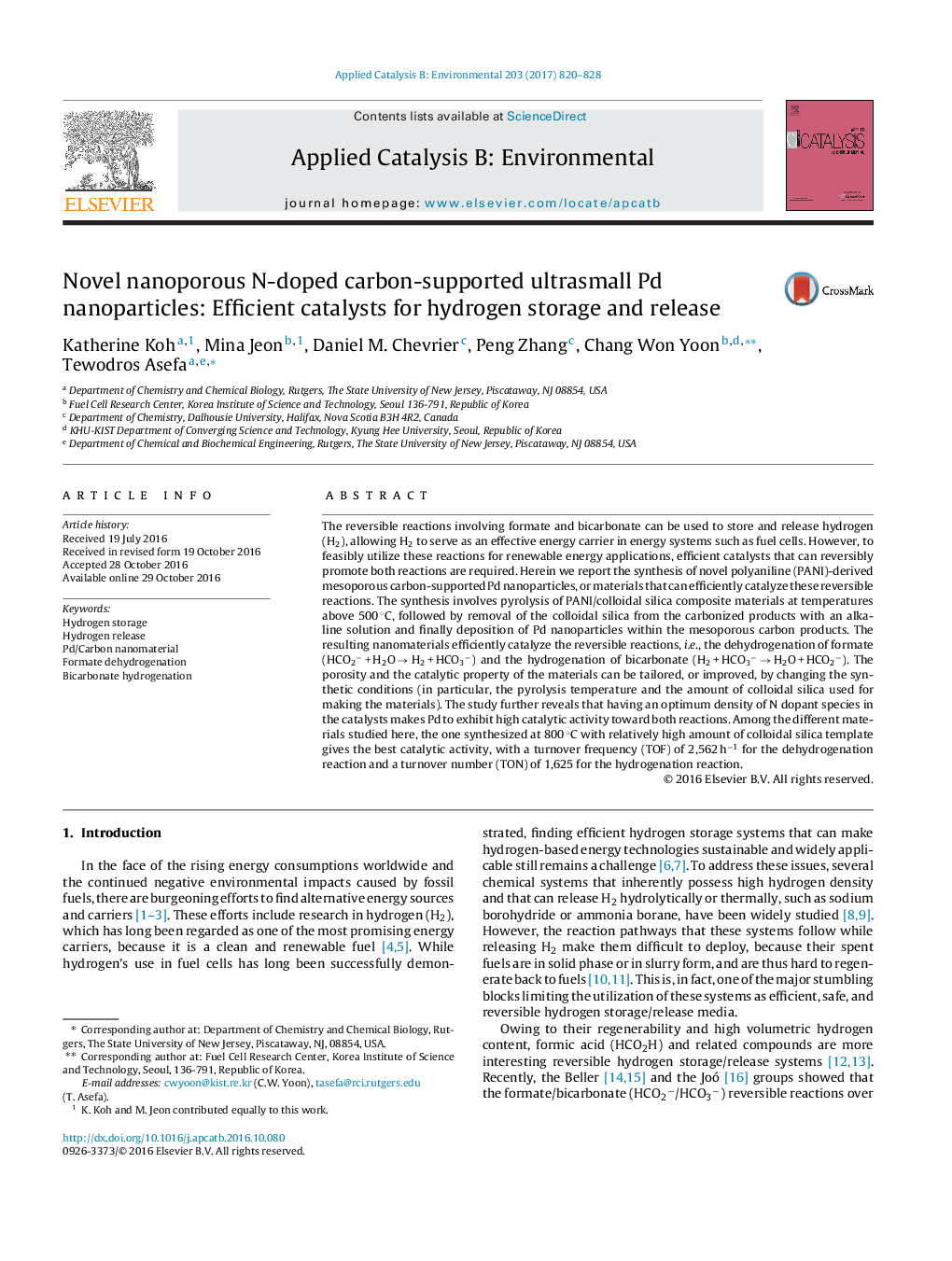| کد مقاله | کد نشریه | سال انتشار | مقاله انگلیسی | نسخه تمام متن |
|---|---|---|---|---|
| 6454583 | 1418817 | 2017 | 9 صفحه PDF | دانلود رایگان |

• N-doped nanoporous carbon-supported Pd nanoparticles are synthesized.
• The materials efficiently catalyze the formate-bicarbonate reversible reactions.
• The materials allow the storage and release of hydrogen (H2) on demand.
• The catalytic property of the materials is improved by changing synthetic conditions.
• Catalytic activity of the materials depends on the N dopant species and surface area.
The reversible reactions involving formate and bicarbonate can be used to store and release hydrogen (H2), allowing H2 to serve as an effective energy carrier in energy systems such as fuel cells. However, to feasibly utilize these reactions for renewable energy applications, efficient catalysts that can reversibly promote both reactions are required. Herein we report the synthesis of novel polyaniline (PANI)-derived mesoporous carbon-supported Pd nanoparticles, or materials that can efficiently catalyze these reversible reactions. The synthesis involves pyrolysis of PANI/colloidal silica composite materials at temperatures above 500 °C, followed by removal of the colloidal silica from the carbonized products with an alkaline solution and finally deposition of Pd nanoparticles within the mesoporous carbon products. The resulting nanomaterials efficiently catalyze the reversible reactions, i.e., the dehydrogenation of formate (HCO2‾ + H2O → H2 + HCO3‾) and the hydrogenation of bicarbonate (H2 + HCO3‾ → H2O + HCO2‾). The porosity and the catalytic property of the materials can be tailored, or improved, by changing the synthetic conditions (in particular, the pyrolysis temperature and the amount of colloidal silica used for making the materials). The study further reveals that having an optimum density of N dopant species in the catalysts makes Pd to exhibit high catalytic activity toward both reactions. Among the different materials studied here, the one synthesized at 800 °C with relatively high amount of colloidal silica template gives the best catalytic activity, with a turnover frequency (TOF) of 2,562 h−1 for the dehydrogenation reaction and a turnover number (TON) of 1,625 for the hydrogenation reaction.
Figure optionsDownload high-quality image (97 K)Download as PowerPoint slide
Journal: Applied Catalysis B: Environmental - Volume 203, April 2017, Pages 820–828